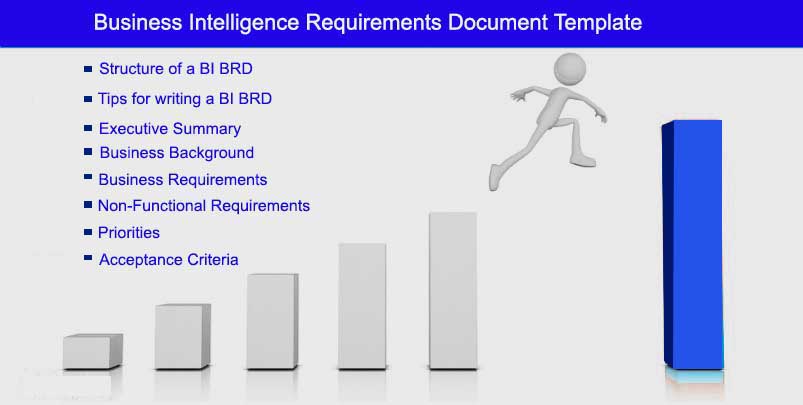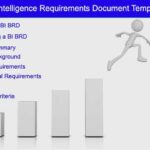The Best Fluffy Pancakes recipe you will fall in love with. Full of tips and tricks to help you make the best pancakes.
Introduction
A business intelligence (BI) requirements document (BRD) is a document that describes the requirements for a BI system. The BRD is used to communicate the business needs to the BI team and to ensure that the BI system meets the needs of the users.

Crafting a Comprehensive Business Intelligence Requirements Document Template
In the intricate landscape of Business Intelligence (BI) implementation, success is contingent on the systematic gathering and documentation of requirements. A well-structured Business Intelligence Requirements Document serves as the blueprint, ensuring clarity, alignment, and successful execution of the BI project. In this article, we unravel the essential components of an effective BI Requirements Document Template, providing organizations with a robust framework for their BI journey.
Introduction: Setting the Stage for Success
1. Project Overview: Provide a concise overview of the BI project, including its purpose, scope, and key objectives. Clearly define the expected outcomes and benefits.
2. Stakeholder Identification: Enumerate and categorize stakeholders involved in the BI project, detailing their roles, responsibilities, and expectations. Differentiate between primary and secondary stakeholders.
Business Requirements
3. Business Goals and Objectives: Clearly articulate the overarching business goals and specific objectives that the BI solution aims to address. Align these with the broader organizational strategy.
4. Key Performance Indicators (KPIs): Define the critical metrics and Key Performance Indicators (KPIs) that will be monitored and analyzed through the BI solution. Ensure these align with the organization’s strategic priorities.
5. Data Requirements: Specify the types of data required for analysis and reporting. Detail sources, formats, and any integration needs. Clarify data quality and accuracy expectations.
6. Reporting and Dashboard Needs: Define the reporting formats and dashboard components required by different user groups. Specify visualization preferences, interactivity levels, and customization options.
7. Data Governance and Security: Detail data governance policies, including data ownership, access controls, and security measures. Address compliance requirements relevant to the industry and organization.
Technical Specifications
8. Data Sources and Integration: Enumerate the data sources to be integrated into the BI solution. Provide details on existing systems, databases, and any external data feeds that require integration.
9. Technology Stack: Specify the preferred technology stack for the BI solution, including BI tools, databases, and integration platforms. Clarify compatibility requirements with existing IT infrastructure.
10. Scalability Requirements: Define the scalability needs of the BI solution, considering potential growth in data volume and user base. Outline plans for accommodating increased demands over time.
11. Performance and Response Time: Set performance expectations and response time requirements. Define acceptable latency levels for data retrieval and report generation to ensure a seamless user experience.
User Requirements
12. User Profiles: Identify and categorize various user groups involved in BI activities. Define user roles, responsibilities, and specific BI needs for each group.
13. Training and Support: Outline training requirements for users with varying levels of proficiency. Specify the need for ongoing support, resources, and documentation to facilitate user adoption.
14. Accessibility and Usability: Define requirements related to the accessibility and usability of the BI solution. Consider factors such as mobile responsiveness and intuitive user interfaces.
Implementation Timeline and Budget
15. Project Timeline: Provide a realistic and detailed timeline for the BI implementation. Include key milestones, testing phases, and the anticipated go-live date. Ensure alignment with overall project objectives.
16. Budget Allocation: Specify the budget allocation for the entire BI project. Break down costs related to software licenses, hardware, training, consulting services, and any other relevant expenses.
Testing and Quality Assurance
17. Testing Procedures: Outline the testing procedures and methodologies to ensure the accuracy and reliability of the BI solution. Include plans for user acceptance testing (UAT) and any other testing phases.
18. Quality Assurance: Detail the quality assurance processes, encompassing data validation, error handling mechanisms, and ongoing monitoring strategies to maintain the integrity of the BI solution.
Conclusion: Paving the Way for BI Excellence
A well-structured Business Intelligence Requirements Document Template is the linchpin for a successful BI implementation. By comprehensively addressing business, technical, and user requirements, organizations can ensure that their BI solution not only meets current needs but is also poised for adaptability and scalability. As businesses continue to harness the power of data-driven insights, a meticulously crafted requirements document becomes the roadmap, guiding them toward BI excellence and strategic success.



